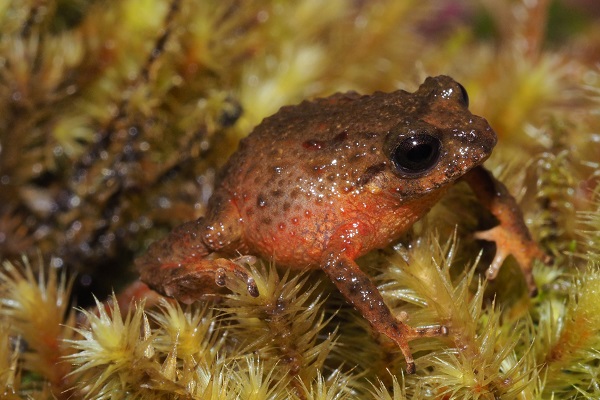
Simon Barnes describes a frog known by sound, not sight: the newly discovered Tiktik Rainfrog.
Peter Pan’s mortal enemy Captain Hook is perpetually pursued by a crocodile. Hook can tell when it’s near because the crocodile once swallowed a clock — so it ticks. Whenever he hears the tick, Hook runs. Smee tell him darkly: “Some day the clock will run down and he’ll get you.”
Ha! An image of the way we live now: time running out, tick by tick. Time is running out for the rainforests and for the creatures that live in its still-teeming embrace. We will lose them all if we don’t do something about it, if we leave it for other people to fix.
Tick. Tick. Tick. A new voice joins the chorus, a voice new to science, and rightly called the Tiktik Rainfrog. It was discovered only last year, in one tiny corner of Ecuador, a corner that the World Land Trust is doing its damnedest to protect.
It’s not quite as big as a crocodile – in fact, it’s not quite as big as your thumbnail – but the males summon the females with their ticking call every evening just after six. Tick! Tick! A series of short notes, with an appreciable gap between them, repeated continuously and apparently tirelessly.
Scientific name: Pristimantis tiktik. Obviously.
They are frogs that have escaped the tyranny of pond and stream: instead they exploit splashes and puddles in hollows and dips, which abound in this damp leafy world. In the one place where you can find them, you find a lot of them.
So what is the first thing that we have discovered about this pocket-watch of a beast? That it’s endangered. Obviously. The species is found in a single patch of forest, and the place itself is small — less than 200 square kilometres, one sixth the size of Greater Manchester. Damage those few square Ks and you’ve lost your frog.
And the area is threatened by mining, invasive pine trees, the grazing of domestic animals, wildfire and road construction. What can we do? We can save its habitat. We can try and stop the clock running down.
More information
The Tiktik Rainfrog is found close to the border of the Water Protection Area World Land Trust is currently working to protect with partner Naturaleza y Cultura Ecuador (NCE). This habitat is still relatively unexplored, with two new species declared there last year: the Tiktik Rainfrog and the Blue-throated Hillstar, both endangered due to the threats to their habitat.


